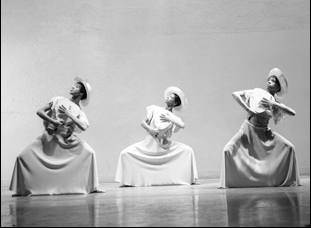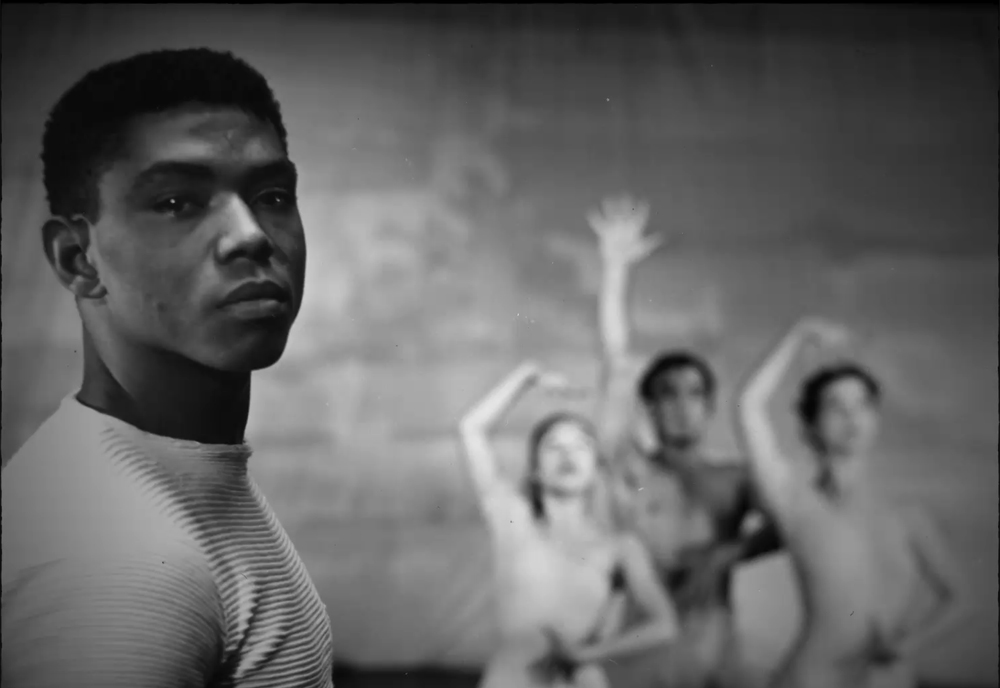In “Ailey,” the legendary choreographer can be heard recounting in his own words how he saw the Ballet Russes de Monte Carlo when he was 12, and the precision with how he’s able to remember his first steps towards a career in ballet watching Katherine Dunham perform after thinking there was no one to model himself after as an African-American dancer makes the memory seem as if it happening right in front of him. It isn’t just his description of his newfound ritual of heading to downtown Los Angeles after moving to the city from Texas that makes it so vivid, but perhaps the fact that Alvin Ailey has been so rarely heard speaking about himself, let alone in such an unguarded fashion for as much of a titan in modern dance as he became, deeply protective of his personal life when he knew being gay would make an already improbable road to success that much more difficult, though holding it in also put his own mental health in jeopardy.
Jamila Wignot didn’t always know she’d have access to recordings that Ailey made in the final year of his life as she worked on what would become a stunning tribute, but while documentarians may typically approach their subjects with the intention of peeling back layers, the filmmaker’s approach to do the reverse with “Ailey” left it open to every possibility, honoring a subject who saw the human body as a collection of all the experiences it had been subject to in order to fuel movement ahead. While the film is explicitly built around the present, with Wignot observing the Ailey Company mounting a production of Rennie James’ “Lazarus,” a two-act ballet charting the incredible legacy of the company’s founder that at once was a history and a platform for all the new work Ailey had inspired, the filmmaker brilliantly allows for memory to flow through the film fluidly not as some sort of recall but to live side-by-side with the action of any given moment.
“Ailey” moves as gracefully across time as the members of his company dance across a stage, with Wignot carefully curating archival materials that create context around the artist’s life as much as they are a direct depiction and although the film could be classified as a biography, it is nothing less than the story of the African-American experience of the 20th century as Ailey incorporated his upbringing during the Great Depression, the invention of jazz, the struggle for civil rights, the tumult of a country at war during the 1970s and ultimately the loneliness of living with AIDS into his work. It doesn’t only reflect how Ailey saw time as a continuum, but how people carry on as well when the presentation of interviews with those closest to him and his contemporaries transcend typical nonfiction convention to reflect who he could bring together first in his company and then in the larger world with shows that could invite so many others in.
After its premiere at Sundance, “Ailey” is beginning to roll out in theaters across the country this week and Wignot graciously took the time to talk about how she felt creatively liberated herself in making a film about the dance genius after years of working in the trenches on more traditionally formal documentaries and putting together such a joyful experience in the midst of a pandemic.

I loved the Ailey Company since I discovered them and initially, I’m like “Oh my God, we’re going to get to film dance and we’re going to be living in these dances.” It was really the idea of a documentary about movement and visuals that felt like a new step for me in terms of my process and work. But then as I discovered more about Mr. Ailey’s biography, which I wasn’t familiar with in any great detail, I loved to be on a journey with an artist as they become who they are, discovering this form and finding his voice. Selfishly, I’m just very interested in everybody’s artistic process, so besides my head exploding into confetti right after [Insignia] approached me, it’s like bottle it back up and let’s get going.
Something that particularly excited me about this as a biopic is that as much as it’s about the man, it’s about the company and you give it a true ensemble feel that seems to go beyond just having a number of people speak about him. Were you conscious of that from your initial approach?
That grew over the process of listening to him, listening to his ensemble and thinking about how much he was not interested in building a modern dance company in his own choreographic image, which is typically how they’re done. From the beginning, he knew he wanted to feature work from choreographers who came before him and from future generations. There was always a commitment to something larger than himself and his own artistic voice, so it felt like we had to find a way to honor that, which is why also we felt we had to show the company today. Even before we sat down with Miss [Judith] Jamison and she started talking about everyone being a representation of his breath that lived on beyond him, you feel his spirit in that building, and you understand that this enterprise lived on beyond him, so that was absolutely was a goal that emerged out of conversations and listening deeply to him and the telling of his own story.
When sitting in on the present-day rehearsals for “Lazarus,” did it give shape to this as far as how the dance might interact with what you wanted to do with the archival?
Rennie Harris was finding his way with “Lazarus” and we were finding our way with that dance, and of course, we were both building works that were about the same subject, so I think in some ways what we capture in that rehearsal informs the shape of our biographical story, but if anything Daniel Harder, the dancer who does the solo, when we saw that, we very much knew this is where this is going to go and this has to be in [the film] and it has to be almost the whole solo, and then the rest of the dance work was a very intuitive and thematic process of figuring out where thematic connections between what we filmed in the rehearsal studio was and where they linked up with Mr. Ailey’s own story.
You’ve said Mr. Ailey’s references to “blood memory” and the idea that experience was passed down from generation to generation were quite influential. How did that free things up for you to move through time?
Yes, it’s funny that separately Rennie and I both had that epiphany, like “Oh, memory, that is what this is going to be.” [laughs] It freed us up in terms of being more thematically driven in the work, but it also introduced the possibility of an impressionistic approach to telling this story — of really living in memories and really it just blew open the possibilities for us in terms of how we could use archive for a subject that doesn’t have a personal visual archive that documents his own earliest years and experiences. We realized for a man who believed himself to be a product of the generations that came before, we could build a visual world that was like the world he would’ve experienced, so it just opened up the opportunity visually to be all over space and time, which was so exciting to not feel like the archive had to be representational and literal, but impressionistic.
Was that exciting for you when you’ve come up in a more traditional documentary realm?
Yes, yes, yes…yes, YES. [laughs] It was like freedom! Also, documentaries can lead with the exposition or sometimes with the story and because dance is abstract, one of the things we were trying to do with this is [ask ourselves] can we tell a story through visuals? In other words, can [Ailey] say something and can we show you visual material that enhances, adds, or mirrors, but he’s not describing every single thing? Can you understand loneliness through an image of a single man in a giant lake or through a solo performance? Some of this was about can visual imagery in documentary function in the way it does in narrative [where] there’s subtext and it’s not just wallpaper to get us from point to point. That’s something that my editor Annukka Lilja and I really became symbiotic [on was] being in search of how visual image could communicate something [besides being relative to a story].
Was there something that broke this open for you or changed your ideas of what this could be?
Yeah, the scene of Mr. Ailey’s mental health struggles, we were with a man in his forties and he’s lived this dynamic life and we started with a scene where we could have an impressionistic approach from all across time and just explode open that. That really was the scene where we built our language and we built the film then moving back from those foundational ideas of playing things backwards and showing things from across [time where] it could be an image from the 1920s, but it also could be an image from 1978 and we could be all over the place in a poetic way.
You’ve made something so joyful, which is a word I’ve heard you use a bunch yourself in describing this and during the pandemic, was it nice having something like this to work towards?
Yeah, I think I had a very strange pandemic experience because my day-to-day life outside of this work was heightened levels of anxiety and stress and fear — all the things we were feeling as a world — but my working life was being steeped in an artist who really cared about beauty and the human capacity for joy, and who cared about compassion and empathy, so it was a lifeboat for me and I think for my whole team. Really, I think it very much gave us all something to hold onto and carried us through a very dark time.
“Ailey” opens on July 23rd in New York at the Angelika Film Center and Film at Lincoln Center, and expands nationally on August 6th, including Los Angeles at the Landmark.




